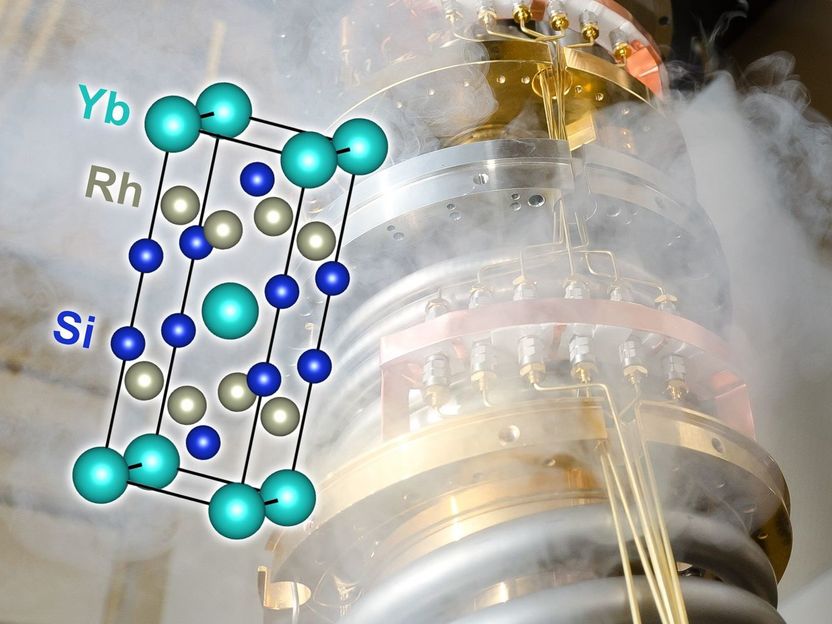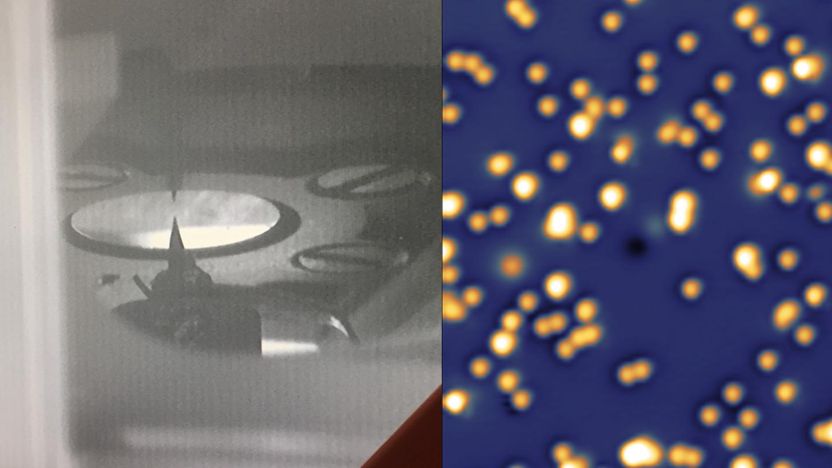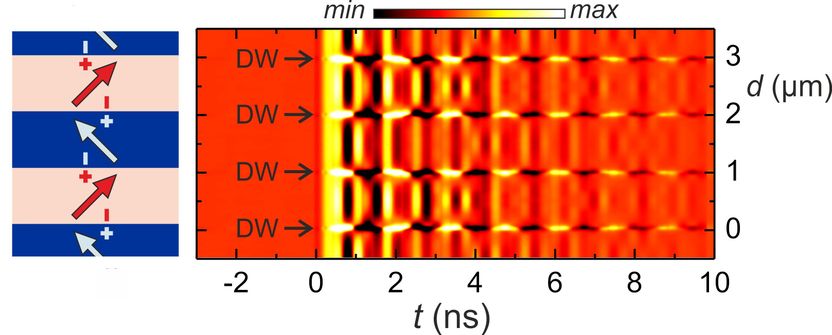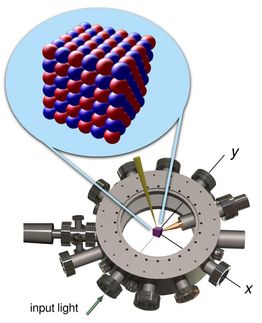Using ultra-low temperatures to understand high-temperature superconductivity
A surprising discovery could help solve the riddle of high-temperature superconductivity
At low temperatures, certain materials lose their electrical resistance and conduct electricity without any loss - this phenomenon of superconductivity has been known since 1911, but it is still not fully understood. And that is a pity, because finding a material that would still have superconducting properties even at high temperatures would probably trigger a technological revolution.

Crystal structure of the "strange metal" superconductor YbRh2Si2 and a view of the cryostat used for the measurements
Technische Universität Wien
A discovery made at TU Wien (Vienna) could be an important step in this direction: A team of solid-state physicists studied an unusual material - a so-called "strange metal" made of ytterbium, rhodium and silicon. Strange metals show an unusual relationship between electrical resistance and temperature. In the case of this material, this correlation can be seen in a particularly wide temperature range, and the underlying mechanism is known. Contrary to previous assumptions, it now turns out that this material is also a superconductor and that superconductivity is closely related to strange metal behaviour. This could be the key to understanding high-temperature superconductivity in other classes of materials as well.
Strange metal: linear relationship between resistance and temperature
In ordinary metals, electrical resistance at low temperatures increases with the square of the temperature. In some high-temperature superconductors, however, the situation is completely different: at low temperatures, below the so-called superconducting transition temperature, they show no electrical resistance at all, and above this temperature the resistance increases linearly instead of quadratically with temperature. This is what defines "strange metals".
"It has therefore already been suspected in recent years that this linear relationship between resistance and temperature is of great importance for superconductivity," says Prof. Silke Bühler-Paschen, who heads the research area "Quantum Materials" at the Institute of Solid State Physics at TU Wien. "But unfortunately, until now we didn't know of a suitable material to study this in great depth." In the case of high-temperature superconductors, the linear relationship between temperature and resistance is usually only detectable in a relatively small temperature range, and, furthermore, various effects that inevitably occur at higher temperatures can influence this relationship in complicated ways.
Many experiments have already been carried out with an exotic material (YbRh2Si2) that displays strange metal behaviour over an extremely wide temperature range – but, surprisingly, no superconductivity seemed to emerge from this extreme "strange metal" state. "Theoretical considerations have already been put forward to justify why superconductivity is simply not possible here," says Silke Bühler-Paschen. "Nevertheless, we decided to take another look at this material."
Record-breaking temperatures
At TU Wien, a particularly powerful low-temperature laboratory is available. "There we can study materials under more extreme conditions than other research groups have been able to do so far," explains Silke Bühler-Paschen. First, the team was able to show that in YbRh2Si2 the linear relationship between resistance and temperature exists in an even larger temperature range than previously thought - and then they made the key discovery: at extremely low temperatures of only one millikelvin, the strange metal turns into a superconductor.
"This makes our material ideally suited for finding out in what way the strange metal behaviour leads to superconductivity," says Silke Bühler-Paschen.
Paradoxically, the very fact that the material only becomes superconducting at very low temperatures ensures that it can be used to study high-temperature superconductivity particularly well: "The mechanisms that lead to superconductivity are visible particularly well at these extremely low temperatures because they are not overlaid by other effects in this regime. In our material, this is the localisation of some of the conduction electrons at a quantum critical point. There are indications that a similar mechanism may also be responsible for the behaviour of high-temperature superconductors such as the famous cuprates," says Silke Bühler-Paschen.
Original publication
Other news from the department science

Get the chemical industry in your inbox
By submitting this form you agree that LUMITOS AG will send you the newsletter(s) selected above by email. Your data will not be passed on to third parties. Your data will be stored and processed in accordance with our data protection regulations. LUMITOS may contact you by email for the purpose of advertising or market and opinion surveys. You can revoke your consent at any time without giving reasons to LUMITOS AG, Ernst-Augustin-Str. 2, 12489 Berlin, Germany or by e-mail at revoke@lumitos.com with effect for the future. In addition, each email contains a link to unsubscribe from the corresponding newsletter.
Most read news
More news from our other portals
Last viewed contents

A step closer to single-atom data storage
Silverite
Beta_adrenergic_receptor_kinase-2
Silver_chloride

Study calculates the speed of ice formation
Extremely_low_frequency
Copper(I)_oxide
Metal
Category:Meglitinides

Bubble-recoil could be used to cool microchips, even in space
Electron pairs precede high-temperature superconductivity - New method exploring 'energy gap' shows electron pairs exist before superconductivity sets in





























































